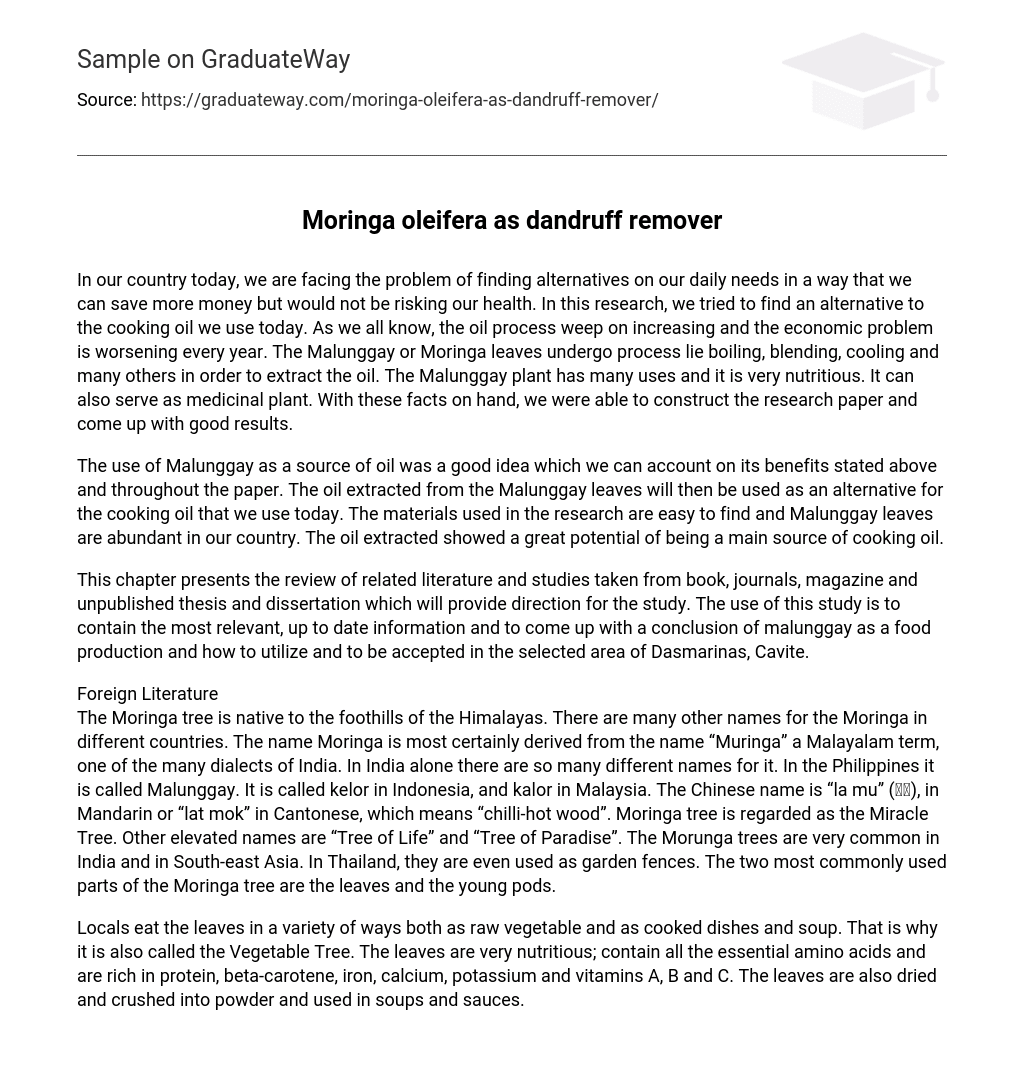Our country is currently facing the dilemma of finding cost-effective alternatives for our daily needs without compromising our health. This study focuses on finding a substitute for the cooking oil that is commonly used. Due to the continuous increase in oil prices and worsening economic conditions annually, we explored the potential of extracting oil from Malunggay or Moringa leaves. The process involves boiling, blending, cooling, and various other steps. Not only is the Malunggay plant highly nutritious, but it also has medicinal properties. Armed with these facts, we conducted research and obtained positive outcomes.
The utilization of Malunggay as an oil source was a favorable concept due to its mentioned benefits in the paper. The extracted oil from Malunggay leaves can serve as a substitute for modern cooking oil. The research materials are readily available and Malunggay leaves are abundant in our nation. The extraction process showcased promising potential for Malunggay oil to become a primary cooking oil option.
In this chapter, we will examine the literature and studies related to malunggay as a food production, which have been taken from books, journals, magazines, and unpublished thesis and dissertations. The purpose of this study is to gather the most relevant and up-to-date information, and to draw conclusions on how malunggay can be utilized and accepted in the selected area of Dasmarinas, Cavite.
Foreign Literature
The Moringa tree is indigenous to the foothills of the Himalayas and has different names across countries. In India, it is referred to as “Muringa” or “Malunggay” in the Philippines. Indonesia identifies it as “kelor,” while Malaysia calls it “kalor.” In China, Mandarin speakers know it as “la mu,” whereas Cantonese speakers call it “lat mok,” both meaning “chilli-hot wood.” This tree has been given various titles like the Miracle Tree, Tree of Life, and Tree of Paradise. It is found abundantly in India and Southeast Asia, where Thailand utilizes its leaves and young pods for garden fences.
The Vegetable Tree, also referred to as the Vegetable Tree, is consumed by locals in different ways. It can be eaten raw or cooked in various dishes and soups. The leaves are rich in nutrients, containing all essential amino acids as well as high amounts of protein, beta-carotene, iron, calcium, potassium, and vitamins A, B, and C. Moreover, the leaves can be dried and powdered for use in soups and sauces.





